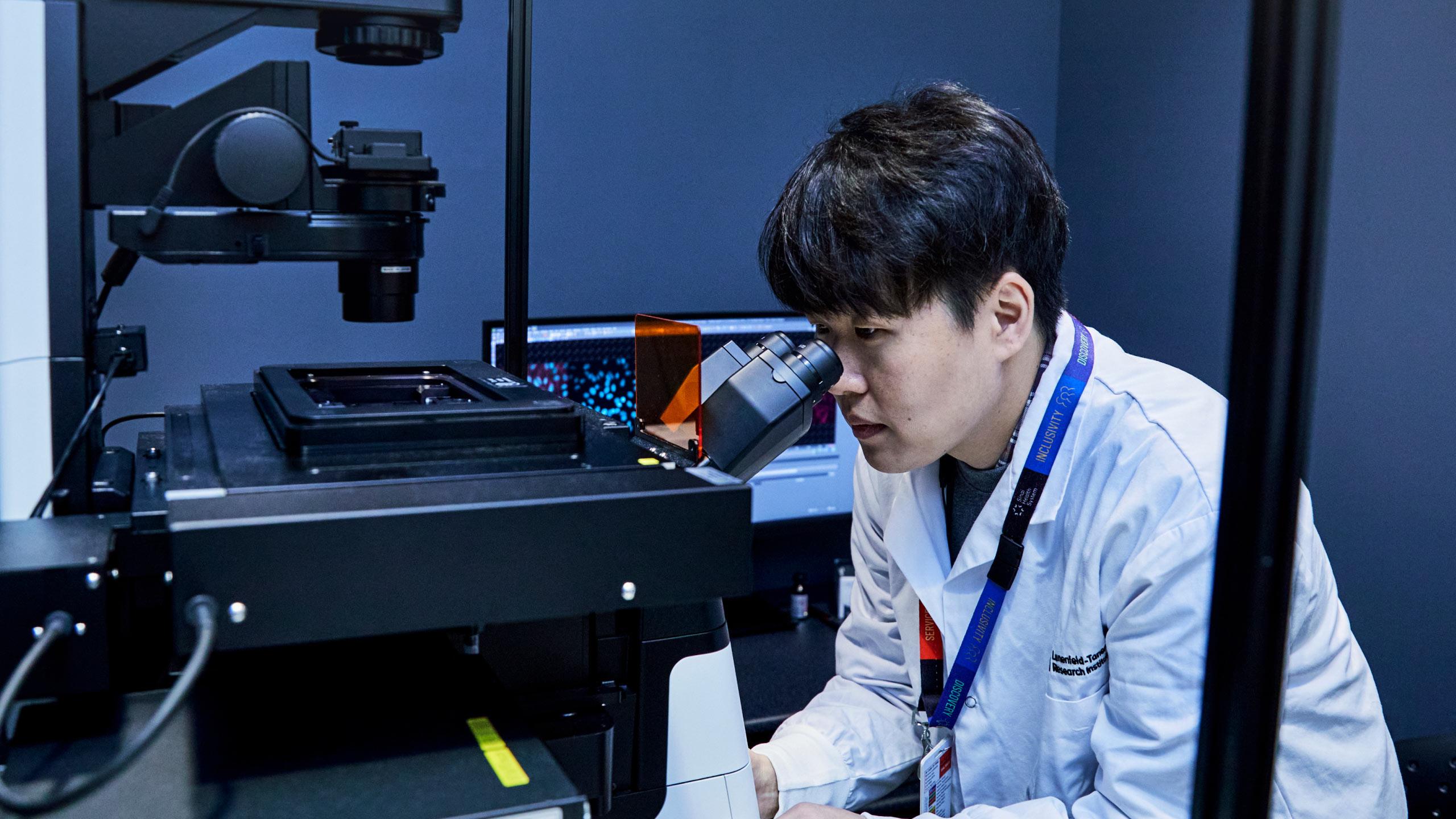Appendix Cancer
Learn more about appendix cancer and how it is treated.
Overview
The appendix is a pouch-like tube attached to your large intestine.
Appendix cancer (or appendiceal cancer) is a very rare type of cancer that occurs when abnormal appendix cells multiply and form a tumour.
Types of appendix cancer
There are several types of appendix cancer. Our physicians will tailor your treatment to your type of cancer.
Carcinoid tumours
These tumours start in the neuroendocrine cells in the appendix. These are cells that make hormones while also doing the work of nerve cells. Neuroendocrine cells exist in many different parts of your body.
Most carcinoid tumours grow very slowly. This type of appendix cancer is also called neuroendocrine appendiceal cancer.
Carcinoid tumours are the most common type of appendix cancer.
Adenocarcinoma
Adenocarcinomas are cancers that start in the glands that line your organs. They can show up in different parts of your body.
In appendix cancer, adenocarcinomas start in the cells that make mucus to lubricate the appendix. This type of appendix cancer is also called epithelial appendiceal cancer.
Mucinous cystadenoma
Mucinous cystadenoma are benign tumours in the lining of the appendix. They are noncancerous, but they can cause problems if the appendix ruptures.
Symptoms
Symptoms of appendix cancer include any of the following:
- Bloating
- Abdominal pain
- Pelvic pain
- Appendicitis
- Difficulty swallowing (which can lead to weight loss)
Having these symptoms does not necessarily mean you have cancer, as they can also be symptoms of other conditions.
Diagnosis
Appendix cancer is often difficult to diagnose.
There are several tests commonly used to make a diagnosis. More than one test (or other tests that are not listed) may be needed to make an accurate diagnosis.
Computed tomography (CT) scan
A CT scan takes pictures of the inside of the body using X-rays from different angles. A computer combines these images into a cross-sectional picture that makes it easier to see if there are any abnormalities or tumours.
Biopsy
When your CT scan suggests that cancer is present, a biopsy is needed to make a definite diagnosis.
During a biopsy, a physician removes a small amount of tissue so it can be examined under a microscope and analyzed by a pathologist.
A pathologist is a physician who specializes in interpreting laboratory tests and evaluating cells, tissues and organs to diagnose disease.
Appendectomy
An appendectomy is a surgery to remove your appendix. This is used as a treatment for appendicitis. In some cases, a physician may diagnose appendix cancer after removing your appendix.
Treatment
Your Cancer care team will work with you to create the best personalized care plan based on your specific needs.
Surgery
Surgery is the most common treatment for appendix cancer. During surgery, the tumour and some of the surrounding tissue are removed.
Surgical debulking
Mucin is a gel-like substance that lubricates the appendix. If you have epithelial appendiceal cancer, you may produce too much mucin. The excess mucin accumulates in the abdominal cavity, which can cause pain.
During surgical debulking, a surgeon removes the excess mucin and cancer mass to relieve symptoms like abdominal bloating and discomfort. Debulking means only part of the tumour is removed, because removing the whole tumour would cause too much damage. This can help other treatments work better.
Cytoreductive surgery with hyperthermic intraperitoneal chemotherapy (HIPEC)
Cytoreductive surgery with HIPEC is a very specialized surgical technique that is used to treat some cases of appendix cancer. Typically, the surgeon will try to remove as much of the tumour as possible and then insert a tube into the abdomen through which chemotherapy can be given. The chemotherapy fluid is warmed up to increase its ability to penetrate tissue and kill remaining cancer cells. Mount Sinai Hospital is one of the few hospitals that offer this treatment in Canada.
Systemic chemotherapy
This type of chemotherapy gets into the bloodstream to reach cancer cells throughout the body. This can be done using an intravenous (IV) tube, which is a tube placed into a vein using a needle, or in a pill that you swallow.
This may be recommended chemotherapy if surgery is not possible or as a first step before surgery.







